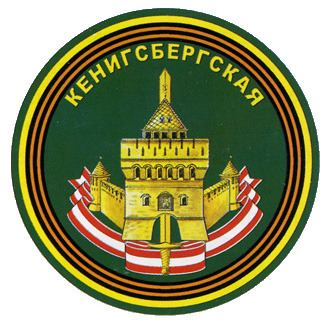Garrison/HQ Nizhny Novgorod | ||
 | ||
Active June 1941 - 1945, 1990s — c. July 2009 Country Soviet Union, Russian Federation Branch Red Army, Russian Ground Forces Size one Motor Rifle division, two Artillery/Missile brigades, one MLRS regiment and other auxiliary brigades/regiments Part of Moscow Military District | ||
The 22nd Army was a field army of the Russian Ground Forces, part of the Moscow Military District. It was active from 1941 to 2010. The order for the formation's dissolution was signed by the Minister of Defence on 1 July 2009.
Contents
Originally it was formed in June 1941 within the Red Army and it comprised 51st Rifle Corps (98th, 112th, and 153rd Rifle Divisions) and 62nd Rifle Corps (170th, 174th, and 186th Rifle Divisions), and several separate regiments, including the 336th and 545th Corps Artillery Regiments. Headquarters was at Velikiye Luki by 22 June 1941, and General Lieutenant F. A. Yershakov took command (who would direct the army until August 1941). Lenski notes that it was then made part of the 'Group of armies of the Reserve of the Main Command'.
During the Battle of Smolensk (1941), six rifle divisions of the army fought fiercely against what victory.mil.ru describes as sixteen Wehrmacht divisions, including three tank and three motorized, and under their assault 22nd Army was forced to retreat. On July 16, 1941, the Germans managed to surround the 51st Rifle Corps, and on July 20, to seize Velikiye Luki. 48th Tank Division joined the Army by August 1, 1941.
As part of the Soviet Western Front, since October, 17th the Kalinin Front, the Army conducted defensive operations on the Idritsa–Drissa–Vitebsk frontier, participated in the Battle of Smolensk, the Kalinin defensive operation, and the Battles of Rzhev - Operation Mars in 1942. General Major V. A. Yushkevich again took command in April 1942, after previously commanding the army in August–October 1941. 3rd Mechanised Corps under General Major M. Ye. Katukov joined the Army in September 1942 when it was formed, though it was later reassigned.
The Army's task as part of Operation Mars was as part of what in Soviet parlance was the 'Bely Offensive Operation in conjunction with 39th Army. Spearheaded by the 3rd Mechanised Corps, the army was tasked to: 'advance eastward up the Luchesa River valley, pierce the German defenses, assist in the capture of Bely, and encircle German forces around Olenino in conjunction with 39th Army.' 'Early on 25 November, 22nd Army, with over 50,000 men and 270 tanks of 3rd Mechanised Corps, assaulted eastward up the Luchesa River valley. Attacking along a narrow corridor flanked by forests and frozen swamps, Soviet forces tore a gaping hole through German defences and drove German forces eastward up the valley. General Yushkevich's attack was spearheaded by Colonel I. V. Karpov's 238th Rifle Division and two regiments of Colonel M. F. Andryushenko's 185th Rifle Division, supported by a tank brigade of General Katukov's mechanised corps. The combined force routed a regiment of the German 86th Infantry Division and punctured the German front.'
In 1943, the Army fought as part of the North-Western Front since April 21, then from October 13 as part of the Baltic Front, which became 2nd Baltic Front on October 20, 1943. 22nd Army defended the river Lovat, and participated in operations at Kholm, Velikiye Luki, Leningrad-Novgorod, Staraya Russa–Novorzhev, and Rezhitsa–Dvina. It then took part in the Riga Offensive Operation, part of the Baltic Offensive. Since October 1944, together with the other armies of the Front it carried out the blockade of the German Army Group Courland in the Courland Pocket. One of the Army's rifle corps was the Latvian 130th Rifle Corps that included two rifle divisions in which served a large number of Latvians in their ranks who would soon be facing their opposites in the Latvian 19th Waffen Grenadier Division of the SS.
Immediately after the war ended, its HQ along with the 109th Rifle Division arrived in the South Ukraine in May 1945. In the Northern summer of 1945, together with the headquarters of the Separate Coastal Army, located in the Crimea, it was reorganised as the new but short-lived Tavria Military District.
It arrived in the Odessa/Tavria area with the 83rd Rifle Corps (47th, 119th, and 168th Rifle Divisions); the 100th Rifle Corps (28th, 37th, and 219th Rifle Divisions); and the 110th Rifle Corps ( 256th, 268th, and 394th Rifle Divisions, soon to become the 48th Rifle Division). Seemingly all these forces, except the 48th Rifle Division, were disestablished rather quickly in 1945-46. Its wartime commanders were:
Post Cold War
The 22nd Army Headquarters was reformed from the previous 13th Guards Army Corps in the early 1990s in the Moscow Military District at Nizhny Novgorod. Initially it controlled the 31st Tank Division, withdrawn from the Central Group of Forces in Czechoslovakia and the 47th Guards Tank Division formerly from the Group of Soviet Forces in Germany, as well as the 166th Separate Motor Rifle Brigade (Tver)(which was formerly the 6th Guards Motor Rifle Division with the Northern Group of Forces in Poland), the 211th Artillery Brigade, the 918th Multiple Rocket Launcher Regiment, (both at Mulino) and two helicopter regiments. However, manpower levels were low; the tank divisions were reported to be at an establishment of 2,193 each and the 166th Motor Rifle Brigade at 3,638.
By June 1998 the two tank divisions had been merged as the new 3rd Motor Rifle Division, and the new division was designated at as 'constant readiness' formation, to be maintained at at least 80% strength. Also, the 166th Motor Rifle Brigade has now been reduced to a storage base as the 70th Base for Storage of Weapons and Equipment (VkhVT).
Composition in 2000s
The army headquarters was disbanded in 2010 as part of wider reforms of the Russian Ground Forces, and it appears HQ 20th Guards Army is moving to its previous facilities in the Nizhy Novogorod area.
